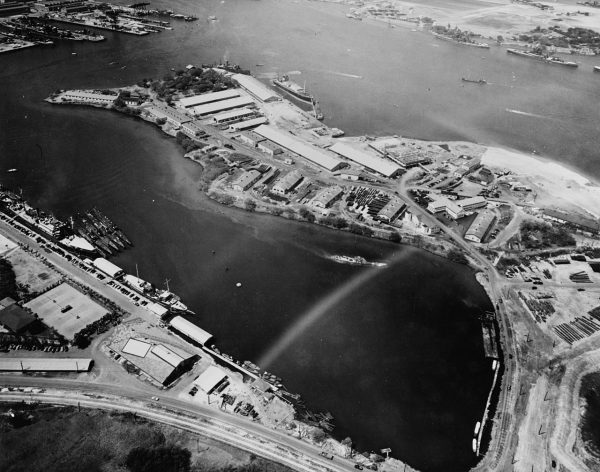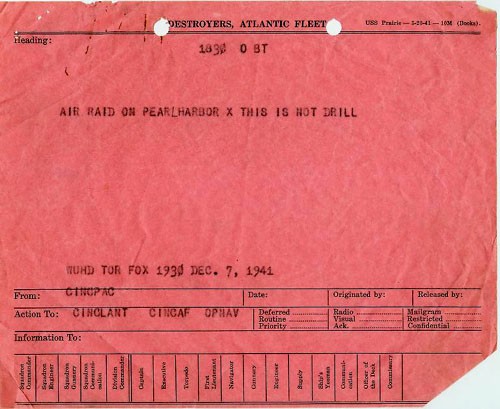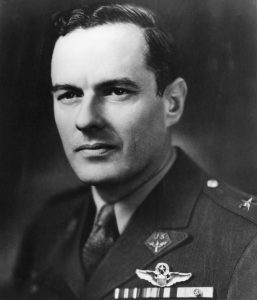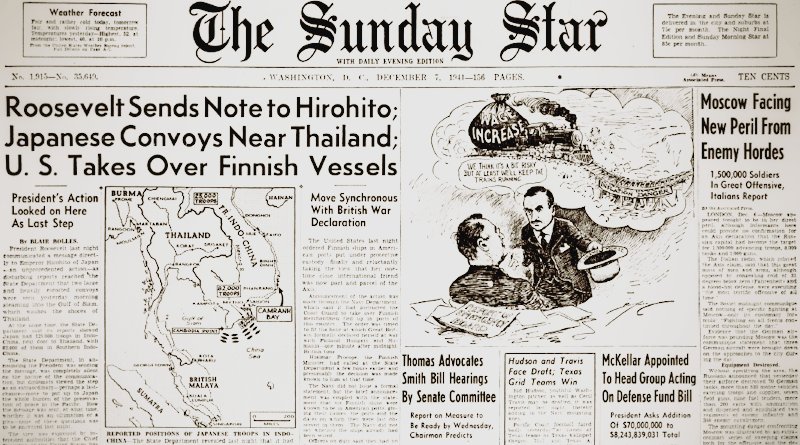World War II Chronicle: December 7, 1941
Click here for TODAY’S NEWSPAPER
Hawaii time is five-and-a-half hours behind Washington, so the paper went to press long before today’s historic events took place.

Today is the final day of the 1941 National Football League regular season. While the Brooklyn Dodgers were cruising to a 21-7 victory over the Eastern Division-leading New York Giants the Polo Grounds’ loudspeakers blasted an announcement:
“Attention please: will Col. William J. Donovan call Operator 19 in Washington immediately?”
Roosevelt’s Coordinator of Information didn’t get to finish watching the game. Military and Naval officers attending the Washington Redskins were likewise paged overhead to report to the office.


Page 21 mentions Maj. Alva L. Harvey, who officially completed his round-the-world flight last week. Also mentioned in the Harvey piece is Col. Robert Olds, head of the Army Air Force Ferry Command.
Robert Olds was one of the original members of the “Bomber Mafia,” a group of Air Corps officers who advocated for expanding the role of the bombing forces, which the mafia felt could have a substantial role in changing aerial warfare. And while Ferry Command sounds like a lame assignment, Olds was the man Maj. Gen. Henry H. “Hap” Arnold picked to made sure thousands of aircraft got from factories across the United States to Europe and other combat zones across the world.
Olds was also charged with choosing sites for hundreds of airports across the United States, forming much of the civil aviation structure we use today.
You may recognize the name and associate it with his future-triple-ace son Robin, one of the nation’s top football players in 1941, and currently attending the U.S Military Academy (along with brother Stevan M. Olds). But the elder Col. Olds (ultimately major general) was a truly brilliant officer who could have become a household name had his life not been cut short by heart disease in April 1943. Gen. Curtis LeMay, who would run Strategic Air Command said if he had to pick the officer who had the greatest impact on his career, it would be Olds.
Summary of the war’s 118th week on page 40… Sports section begins on page 50, and the Rose Bowl organizers have been scratching their heads trying to attract Eastern talent to Pasadena. Not only do schools on the other side of the Rockies have to factor in the cost of traveling across the country, the prospect of playing Pacific Coast Conference champion Oregon State, who lost two games this year just isn’t much of a draw. Not when you can just head down to New Orleans for the Sugar Bowl, like No. 6 Fordham and No. 7 Missouri will. Other bowl games: Miami’s Orange Bowl, the Cotton Bowl in Dallas, and the Sun Bowl in El Paso, Texas.
Apart from the Rose Bowl, which has been around for 28 seasons, postseason bowl games are a relatively new concept. This is just the eighth time the Sugar, Orange, and Sun Bowls have been played, and this will be the sixth Cotton Bowl. All are played on New Year’s Day.
Evening star. (Washington, D.C.), 7 December 1941. Chronicling America: Historic American Newspapers. Lib. of Congress.
https://chroniclingamerica.loc.gov/lccn/sn83045462/1941-12-07/ed-1/
